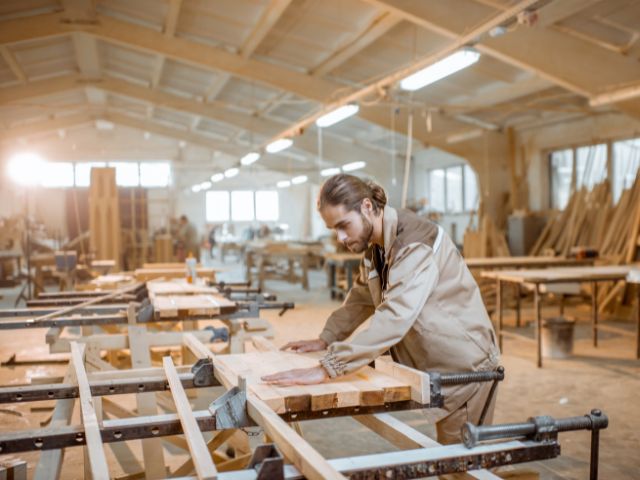

Woodworking is full of trial and error. Even seasoned hobbyists can learn new tricks to improve their skills. Start things on the right foot with these brilliant woodworking tips for beginners, and apply them to your future projects.
Workbenches are essential to woodworking because they serve as cutting stations, can store workpieces, and allow you to assemble materials. Woodworkers can enhance these tables with practical upgrades. In particular, bench dogs are woodworking bench upgrades to think about because they help you clamp wood, allowing you to make repeatable cuts. Accurate cuts are difficult for some beginners, so a helpful tool can improve your results.
Learn about wood before purchasing the material for workpieces. Take note of how long the supplier dried the wood. Generally, kiln-dried lumber is the best because the machine dries wood without warping it. Wet lumber will warp and won’t work well with mechanical equipment.
There’s a difference between wood with character and wood with imperfections. Character refers to unique complexities like streaks, grain patterns, and wormholes. Imperfections are defects that can negatively affect your projects. Wood defects can result in inadequate results or aesthetic issues. A brilliant woodworking tip for beginners is to check for nails, staples, and metal items that can damage your tools when cutting wood.
Regardless of your woodworking experience, sanding curves is difficult. You need a firm yet flexible sanding pad to complete the task. You can make one with sandpaper and a small notepad. Wrap sandpaper around the notepad and bend the material to your preferred arc. This quick and simple tip helps you access hard to reach spots!
Clamping mitered edges is challenging for many woodworkers because they fail to line up correctly. The easiest way to combat this issue is to use painter’s tape as temporary clamps.
Alter the pieces so the outer edges face up. Then, tape the edge-to-edge angles. Make the beveled edges face up, and glue them together. Tape the other two edges, and let them sit until the glue dries. You can remove painter’s tape easily, and the glue won’t stick to the tape.
24World Media does not take any responsibility of the information you see on this page. The content this page contains is from independent third-party content provider. If you have any concerns regarding the content, please free to write us here: contact@24worldmedia.com
